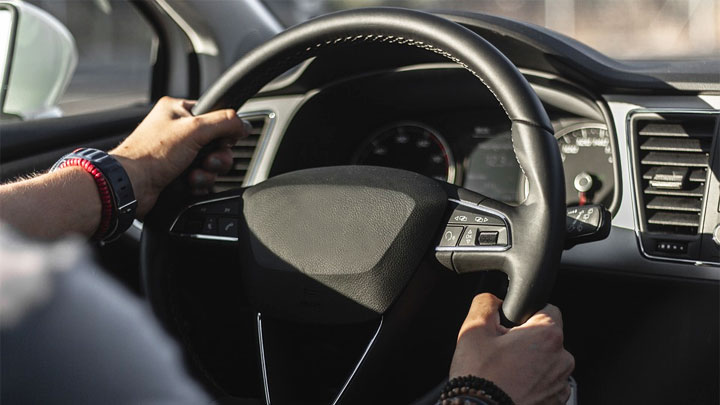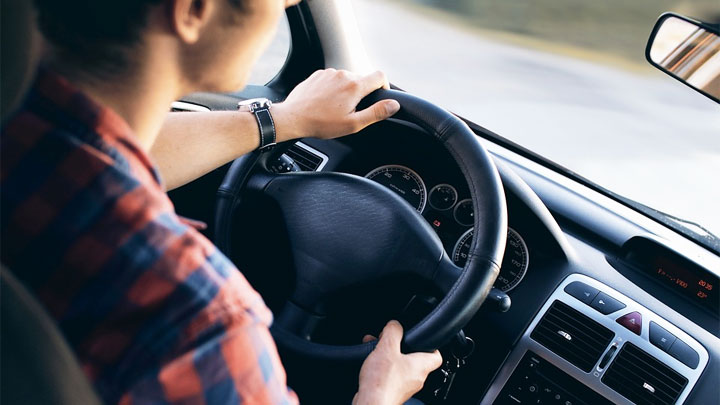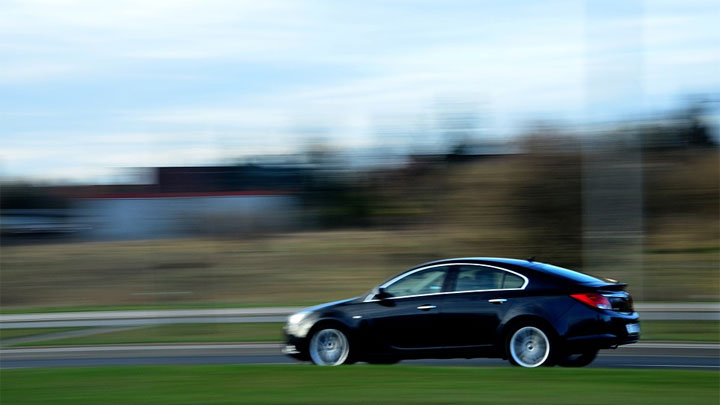6 Symptoms of a Bad Tie Rod End (and Replacement Cost)
Tie rods are vital for precise steering in all vehicles. A functional tie rod connects the suspension and steering system to the front wheels on the ground by several joints, so that the wheels turn accurately as the steering wheel is turned. Such a system allows the driver to use minimal force to turn the vehicle.
But like everything in a vehicle, the tie rod ends will age over time. They will also endure faster wear and damage if you regularly drive over bumps or rough roads.
Keep reading to learn how bad tie rod end symptoms can present themselves and how much they will cost to replace.

What Is a Tie Rod End?
Tie rods, made up of inner tie rods and outer tie rods, link the front wheels to the steering wheel. Both have greased ball joints at the ends to allow rotational forces to be transmitted through the system.
The outer tie rod end is protected by a rubber boot to keep grease in and dirt out, but this rubber can crack with time and allow moisture to get inside the joint and cause corrosion.

See Also: 4 Symptoms of a Bad Ball Joint
Bad Tie Rod End Symptoms
You’re probably wondering how do you know if a tie rod end is bad? Well, there are several very noticeable symptoms that you can watch out for. Below are some common symptoms of a faulty tie rod end.
#1 – Steering Wheel Vibrates or Shakes

The tie rod keeps the components of the suspension solid and tight. If the tie rod end goes bad and loosens, the parts of the suspension will also loosen and cause vibrations and shakes which can be felt in the steering wheel while the vehicle is in motion.
These steering wheel vibrations worsen as the car accelerates and when turning corners.
#2 – Poor Front End Alignment

The tie rod helps sustain the alignment of your vehicle’s front end, and a damaged or worn tie rod end causes loosening of the parts. This will cause the front end to become misaligned and track poorly.
This misalignment is noticed while driving the vehicle because it will start veering to the left or right as it’s pointed forward. This is easy to see if you briefly remove your hands from the steering wheel after directing it straight while driving. A properly-aligned vehicle should maintain a straight path.
#3 – Steering Wheel Feels Loose

A bad tie rod end can also cause the steering wheel to feel loose or have excessive play. This is a dangerous condition, as it can lead to a complete lack of steering. Take the car to the auto shop at once if you notice a loose steering wheel.
See Also: Causes of a Steering Wheel That’s Hard to Turn
#4 – Abnormal Sounds

Any squeaking or squealing while the vehicle is in motion can indicate undesirable metal-on-metal contact. A high-pitched squeaking sound while driving the vehicle, especially around corners, can indicate a tie rod end rubber boot that has cracked, allowing for a loss of lubrication.
Clunking or rattling can also be heard from the front end of the car. Since strange noises don’t automatically imply a failing tie rod end, you’ll want to see if any other symptoms on this page exist.
#5 – Abnormal Tire Wear

Tire wear is a normal occurrence, and should be even on both sides. Uneven wear on one or more tires can indicate a problem. A bad tie rod will cause the inner or outer edges of a tire to wear faster than the rest of the tire.
You can check for abnormal tire wear by standing in front of the vehicle and looking at the inside and outside edges of the front tires.
Uneven tire wear can also have other causes such as a bad alignment, improper tire pressure, or unbalanced tires so it is a good idea to have the car examined by a mechanic.
#6 – Vehicle Vibrates

Once the tires begin to wear unevenly, the entire vehicle can start to vibrate.These vibrations intensify with acceleration, which makes it difficult to drive comfortably. Comfort may be the least of your worries, though.
Vehicle vibration can also be caused by nearly complete failure of the tie rods, which is a very dangerous situation. In this case the tires are loose and shaking on their own, and you may be close to losing steering. Have the vehicle repaired immediately.
See Also: 3 Symptoms of a Bad Sway Bar or Sway Bar Link
Tie Rod End Replacement Cost
Best places to order parts? See: 19 Best Online Auto Parts Stores

On average, the cost to replace a tie rod end ranges from $100 to $400 depending on vehicle, quality of parts used, and how hard it is to get to the tie rod end.
For parts cost, a tie rod end can cost anywhere from $20 to $100, no matter if its the inner or outer tie rod.
- Outer tie rod ends are fairly simple to replace so expect to pay around $80 to $100 in labor as most mechanics will charge a one hour minimum.
- Inner tie rod ends take a bit more effort to get to so count on about $150 to $300 in labor.
Since at least 50% off the total cost is labor, it makes sense to buy OEM or high quality parts to get your money’s worth. Don’t forget to include a front-end alignment in the cost estimate as this is necessary after the repair is completed.
Shop around to compare labor rates at all your local auto shops to reduce the total cost as much as possible. Obviously, lowest labor rate is everything but often you can find a trustworthy independent shop that charges half of what a dealership would charge. Taxes and other fees may be added to the final price as well.
Checking Tie Rod Ends Yourself
It’s a good idea to have the vehicle checked by a mechanic if you notice any of the above symptoms.
However, you can first check to see if your tie rods are loose by grasping a front wheel on the sides and simultaneously pushing with one hand and pulling with the other to see if there is any play in the wheel.
The tie rod can also be grasped and wiggled to check for laxity. Excess mobility is abnormal and repairs will be needed immediately.
- Replace the Engine or Replace the Car? (11 Factors to Consider) - Apr 11, 2024
- Plastic Piece Dragging Under Your Car? (What It Is and What To Do) - Mar 21, 2024
- Timing Belt vs Timing Chain (What’s the Difference?) - Feb 27, 2024

My car makes rattling noise when I make a turn at a very low speed,ive done several alighnment but still pulls on one side,can’t drive at 100km
I would be taking the vehicle back to the shop and discussing further alignment options. Either to have the alignment redone or to see if your car needs some aftermarket parts for further adjustment. Some alignment shops are not as precise as others. You could try a different shop, just find one that specializes in quality alignments.
Before anything major-swap front wheels left to right. Worked for me on a few cars.
I have a Ford Figo. It exhibits a strange Clunking noise from the front underbody of the vehicle whenever driven over mild road undulations. The sound occurs only at city speeds and it doesn’t occur if driven over bigger bumps or potholes or driven at higher or too low speeds. The company service centre fails to pin point the issue repeatedly. The issue was present since vehicle purchase. Other than this random Clunking noise, there is no other faulty behaviour with the vehicle. Since company service centre cannot do anything, I am clueless. What could be at fault here ?
Check all of the following: re-torque fasteners on the chassis, subframe, and suspension. Check for excessive play in suspension bushings. Check for loose axle nuts or loose lug nuts. Lift the vehicle, then shake each wheel up and down and side to side.
One last thing you can check is the sway bar bushings. Sometimes these bushings bind against the sway bar and this can cause a clunk when it suddenly releases. You could try lubricating these bushings and see if it helps.
Great article! Best auto repair web page EVER! THANK YALL SO MUCH!
Thanks for the feedback, Carolyn! Glad to hear it.
After replacement of tie rod end and reck end ,my steering wheel doesn’t turn 9080 degrees or 3 turn
Was your steering wheel straight when you replaced the tie rod? Could the clock spring be at the end of its travel now?
Well your problem with the tie rod that was loose is you can’t just “tighten” it up and voila its all better. When you are repairing them and having them replaced we often will mark or count how many turns so that the factory numbers are still within the oem steering specifications. So I would assume he probably over tightened it on one side because he would have had to take the opposing side off and count how many turns he did to get the proper number on the side he tightened. That’s why your saying it’s only 75% better cus its off just enough to still make that occasional wander or pull slightly. Hope that helps you out and that you try this solution to the tie rods to make sure there both within spec and even on both side.
While driving straight I feel the car move to one side and have to keep the staring wheel turned to the other side to keep it moving straight. Staring wheel is unusually too loose or soft. What might be the problem.
Sounds like a suspension or alignment issue, though it could be a bad tie rod end. You’ll have to have the vehicle inspected to narrow the problem down. Best to get this done as soon as possible.
I drive a ford figo and there’s a vibration when i reach 120kmh on the passenger side i did wheel balancing and alignment. what do you think could be the couse of this vibration.
Have you checked the wheel bearings and CV axle on that side?
I’ve a 2011 Peugeot 3008. On the left side at the front when driving it is squeaking constantly, there is a clunking sound when I turn my steering to the left and like a pressure creaking when I apply breaks. I have had it to 3 mechanics over the past few months and none have fixed the problem. 1st mechanic said he replaced track rod ends. 2nd mechanic said it was my clutchbamd the 3rd said he could find no issue with it. I’m at a complete loss as to what to do. From putting these issues into Google I’ve come up with possibly toe rod ends and or top mount strut. Any ideas?
Have you checked the wheel bearing yet on that side?
Right after I purchased new tires for myNissan murano 2013, a loud buzzing noise started coming from my front passenger tire area. We initially thought it was a bad bearing. However A friend of mine looked at it & saidthat that the tie rod end was loose?? He tightened it for me & it drives 75% better except only when I turn slightly left I can hear the buzzing sound again. Any ideas on what may be causing this?
I’m not sure. It would be best to take the car to a mechanic and get it checked out to make sure it has been repaired correctly. Bad tie rods aren’t something you want to mess around with.
I have replaced steering rack, tie rod and control arm on my mazda..it keep on clinking and wandering is still there. What is the problem?
I’m not sure. You’ll probably have to take it to a mechanic for help with that diagnosis.
Jack the vehicle up and grab the wheel at 3 and 9.try and move the wheel in and out/side to side.Then do the same but hold the wheel at 12 and 6.If the movement is only at 3 and 9 then most likely its the track rod.If theres excessive movement in both 12 and 6,3 and 9 then it could be a loose drive shaft or badly worn bearing.
I have gotten my toe rods check out and the mech said they are fine. Instead we replaced the shock mount and shock absorbers. After those replacements the clunking and clanking Noise still persisted while driving. More so while driving on bumpy roads like a parking lot and cobble stone roads. What else could be the issue?
*also when I jacked up the front end I steered left and right rapidly and there were no noise
Maybe it’s a sway bar link. I had my drivers side worn out and it clunk when I hit bumps of any size. Cost like $20 to replace one and it takes about 30 mins or so to do one side depending on your tools
Stabilizer bar link rod, lower ball joint, and/or inner and outer tie rod this is what causes that noise going over bumps.
Ball joints or wheel bearings
If you believe your tie rods breaking like mine did inner and outer please don’t drive on the highway or high speeds.
Thank you so much. My 2003 Buick, Park Avenue does not have any of those symptoms. Runs smoothly but all the lights on the panel are on, ABS, service your engine soon etc. Took it to a mechanic, it has torn boots and worn outer tie rod end R&R tie rod end outer. total $199.78.
Excellent advise, I can identify my problem
Thank you very much. Let me see if I can figure out something by reading.